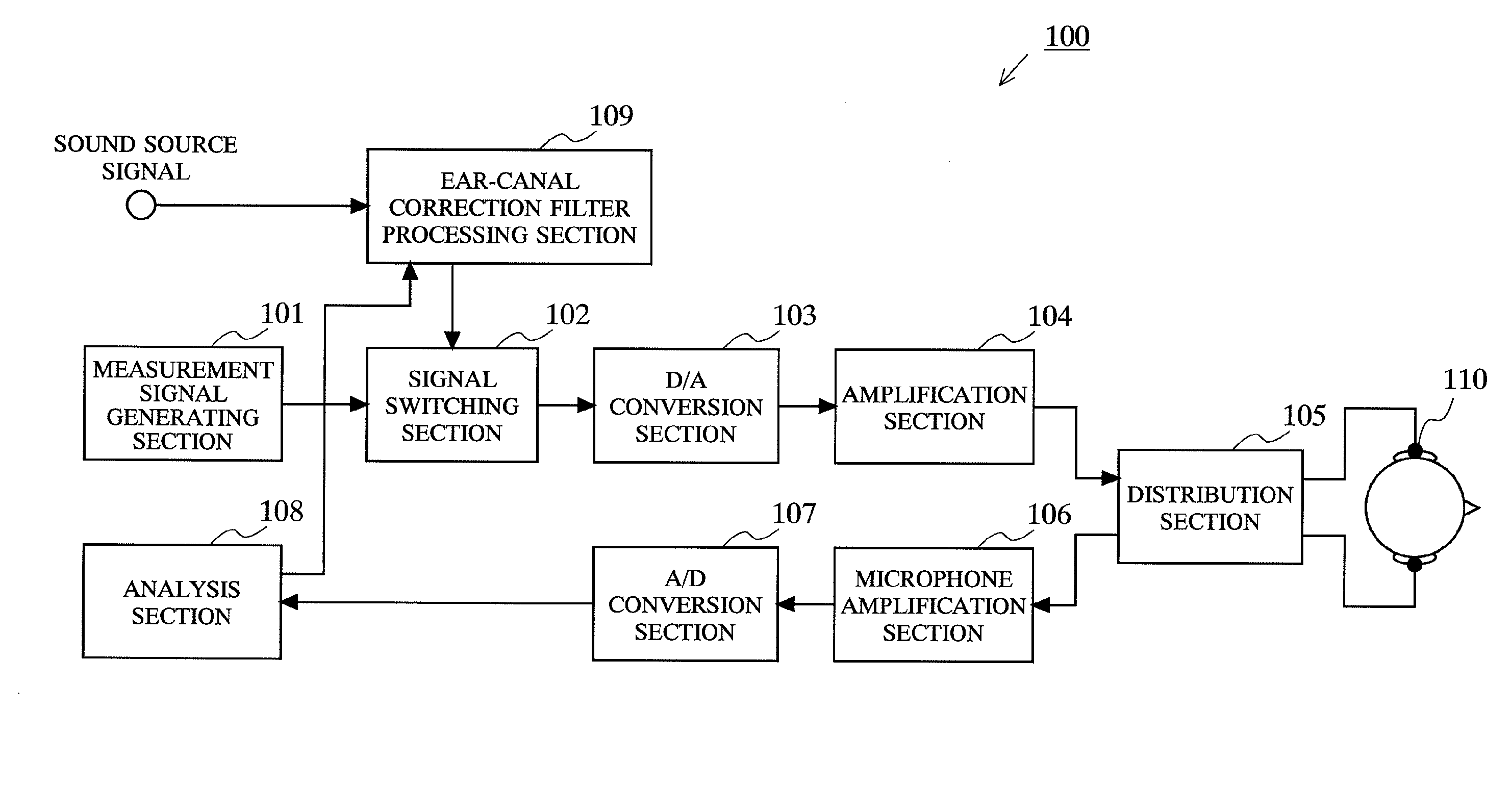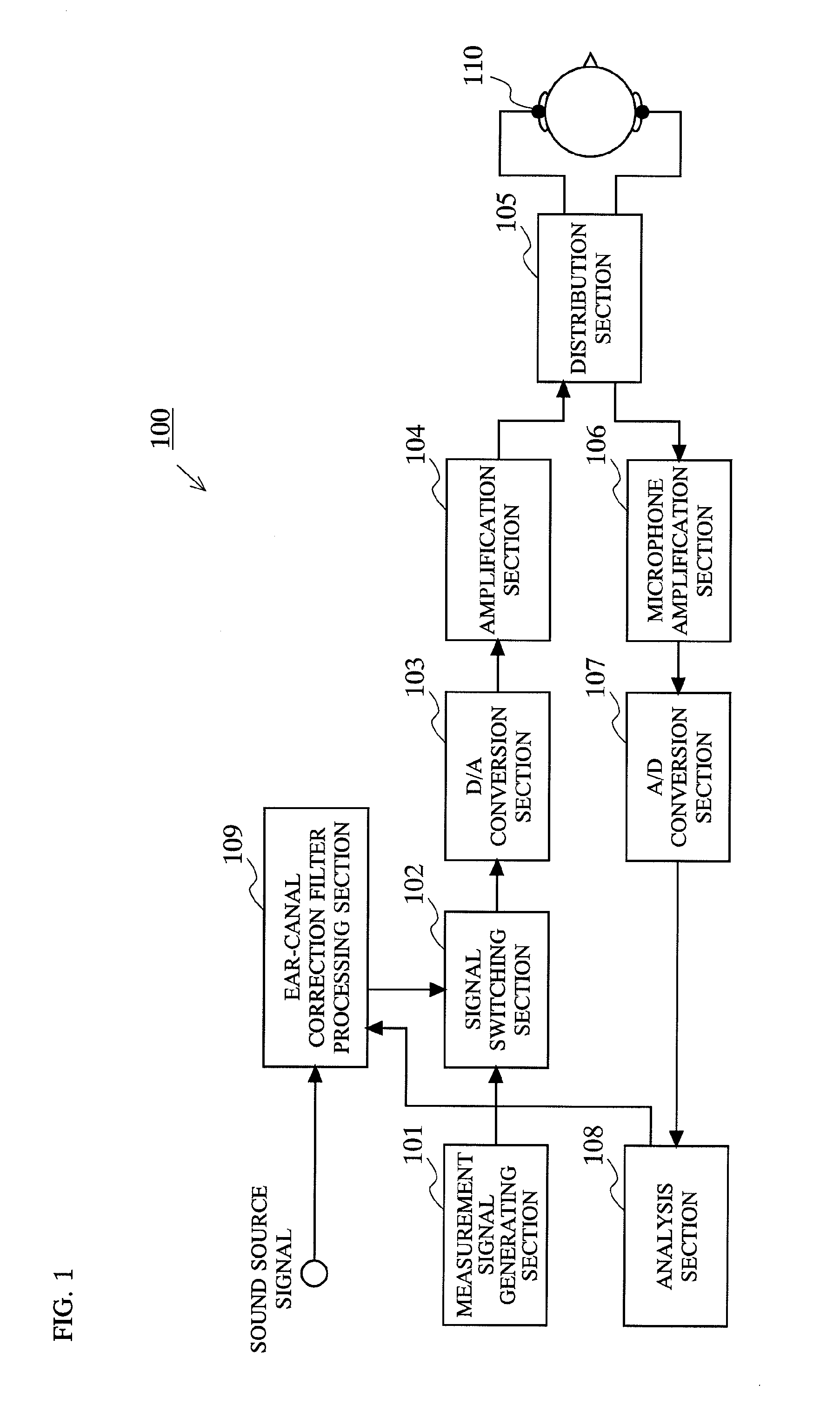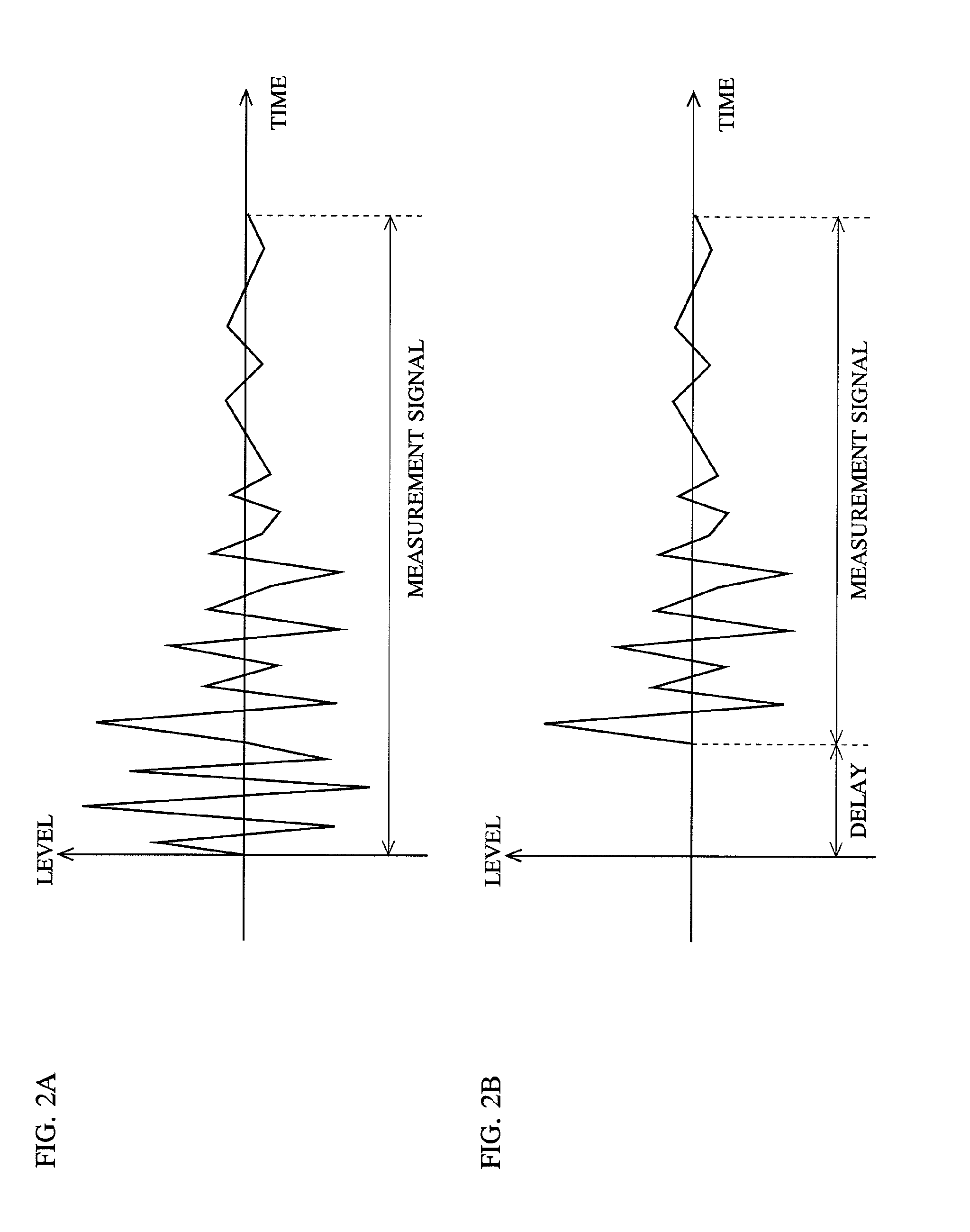Sound reproducing apparatus using in-ear earphone
- Summary
- Abstract
- Description
- Claims
- Application Information
AI Technical Summary
Benefits of technology
Problems solved by technology
Method used
Image
Examples
first embodiment
[0060
[0061]FIG. 1 shows a configuration of a sound reproducing apparatus 100 according to a first embodiment of the present invention. As shown in FIG. 1, the sound reproducing apparatus 100 includes a measurement signal generating section 101, a signal switching section 102, a D / A conversion section 103, an amplification section 104, a distribution section 105, a microphone amplification section 106, an A / D conversion section 107, an analysis section 108, an ear-canal correction filter processing section 109, and an earphone 110. The signal switching section 102, the D / A conversion section 103, the amplification section 104, the distribution section 105, the microphone amplification section 106, and the A / D conversion section 107 constitute a signal processing section 111.
[0062]Firstly, an outline of each component of the sound reproducing apparatus 100 according to the first embodiment will be described.
[0063]The measurement signal generating section 101 generates a measurement si...
second embodiment
[0084
[0085]FIG. 6 shows a configuration of a sound reproducing apparatus 200 according to a second embodiment of the present invention. As shown in FIG. 6, the sound reproducing apparatus 200 includes the measurement signal generating section 101, the signal processing section 111, the analysis section 108, the ear-canal correction filter processing section 109, the earphone 110, and an HRTF processing section 212.
[0086]As shown in FIG. 6, the sound reproducing apparatus 200 according to the second embodiment is different from the sound reproducing apparatus 100 according to the first embodiment, with respect to the HRTF processing section 212. Hereinafter, the sound reproducing apparatus 200 will be described focusing on the HRTF processing section 212 which is the difference. The same components as those of the sound reproducing apparatus 100 are denoted by the same reference numerals and description thereof is omitted.
[0087]When a reproduction of the sound source signal is starte...
third embodiment
[0090
[0091]FIG. 7 shows a configuration of a sound reproducing apparatus 300 according to a third embodiment of the present invention. As shown in FIG. 7, the sound reproducing apparatus 300 includes the measurement signal generating section 101, the signal processing section 111, an analysis section 308, the ear-canal correction filter processing section 109, and the earphone 110. FIG. 8 shows a detailed example of a configuration of the analysis section 308. As shown in FIG. 8, the analysis section 308 includes the FFT processing section 114, the memory section 115, the coefficient calculation section 116, the IFFT processing section 117, a convolution processing section 318, and an HRTF storage section 319.
[0092]The sound reproducing apparatus 300 according to the third embodiment shown in FIG. 7 and FIG. 8 is different from the sound reproducing apparatus 100 according to the first embodiment, with respect to the convolution processing section 318 and the HRTF storage section 31...
PUM
 Login to View More
Login to View More Abstract
Description
Claims
Application Information
 Login to View More
Login to View More - R&D
- Intellectual Property
- Life Sciences
- Materials
- Tech Scout
- Unparalleled Data Quality
- Higher Quality Content
- 60% Fewer Hallucinations
Browse by: Latest US Patents, China's latest patents, Technical Efficacy Thesaurus, Application Domain, Technology Topic, Popular Technical Reports.
© 2025 PatSnap. All rights reserved.Legal|Privacy policy|Modern Slavery Act Transparency Statement|Sitemap|About US| Contact US: help@patsnap.com



